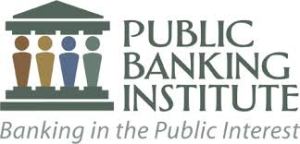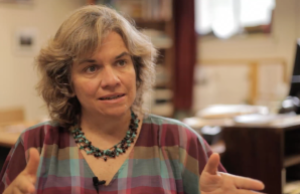From the Mountain Top: Film Festival Founder Claudia Becker Holds Forth (INTERVIEW)
January 9, 2015“The Empties,” by Jess Row (SHORT STORY)
January 11, 2015Question: How can the Vermont legislature find the $100 million needed to fund life in our Green Mountains? (SOLUTIONS)
The answer? A Vermont public bank. 
2VR has long supported independent financing for our once-and-future republic, and last year – 2014 – was a big one for making political and economic inroads with the concept of a public bank for Vermont, including a town meeting campaign in which dozens of towns considered the idea in public forum. Now here we are in 2015, and you’d think our elected officials in the Statehouse have completely forgotten about this revolutionary idea, supported by towns in town meetings across the state last spring. Silly them. Here are a few links to bring everyone up to speed. If you are new to the Vermont-based public banking conversation, check out YES magazine’s fantastic January 7, 2015 news summary – “Vermonters Lobby for a Public Bank – And Win Millions For Local Investment Instead” – detailing our efforts to date. If you’ve never heard of public banking, here’s a MOTHER JONES article – “How The Nation’s Only State-Owned Public Bank Became the Envy of Wall Street” – detailing how public banking is working – not in Vermont, but in the farsighted state of North Dakota, home to the most successful public bank in the U.S. And we recommend Ellen Brown’s books as a primer for those really willing take the public banking plunge.
In the meantime, here’s a new interview conducted by 2VR publisher Rob Williams with Montpelier’s Gwen Hallsmith, director of the Public Banking Institute and Vermont’s leading champion of public banking, about how a public bank for Vermont could help us solve our fiscal woes at a time when we could use some fresh thinking under the Golden Dome. Bring on the public banking license!
Q. Here we are in Vermont – January 2015. The big news facing the state is a projected $100 million budget shortfall. As a proponent of a public bank for Vermont, what’s your reaction?
A. $100 million is close to what we’re sending out of state (or if it stays in state, it goes into the pockets of the high income bond holders) every year in debt service. If we were keeping the interest payments in state government instead of sending them to Wall Street and the 1%, we would have a lot more money to spend on public priorities. Now this won’t all happen in one year, it takes time to build it. A banking license is key, though, because it allows the state to use the somewhat fictional fractional reserve bookkeeping process, where dollars can be in more than one place at the same time. They are on your balance sheet as deposits, and the same dollars are also the assets you use for loans.
Most of us are stuck in what I call the gold standard mentality. We imagine that there is something, somewhere, gold, or other real tangible assets, that moves around to make our money. We have not been on the gold standard since 1974. We are now on the debt standard, and so the ability to issue credit forges the almost magical wealth creation process. We need to recapture the public ability to issue credit in the same way the private banks do to solve our most pressing public problems.
Q. The state legislative session has already identified and “framed” a number of priorities for this legislative session, including education funding reform, picking up the pieces of Governor Shumlin’s defunct universal health care initiative, renewable energy project expansion, and cleaning up Lake Champlain. How might a Vermont public bank offer ways to support these initiatives?
A. In addition to being a source of lower cost loans for public improvements, public banking is also a revenue stream that is outside the usual tax process. So our alternatives are not just raise taxes or cut programs – the interest payments on debt of all kinds can be a new source of revenue.
Q. Consider Vermont governor Shumlin’s now-defunct single payer proposal- the governor scrapped his plans for universal single payer health care one month ago, citing the proposal as “too expensive,” assuming money would be raised through new taxes. Your thoughts?
A. This administration has been unwilling to look outside the box for revenues. They have been unwilling to buck the banking and insurance industry, or to raise taxes on high income people in the state. It’s not hard to see why – a large majority of the folks who occupy the legislature and the administration would be taxing themselves and telling their friends – it’s a very clubby place these days – to take a hike.
Difficult times take innovation and a willingness to change structures that aren’t serving us anymore. When you’re benefiting from the existing system, it’s hard to develop the intestinal fortitude to change it. I haven’t seen a lot of courage or creativity come from the folks in power in Montpelier. So we continue to fiddle while Rome burns.
Q. Talk about public education funding reform and a public bank. Proposals have explored school consolidation, changing income sensitivity modeling, capping budgets, establishing “per pupil” spending thresholds. How does the idea of a Vermont public bank change this conversation and offer new solutions?
A. We look too much at the operations spending side, not enough at the capital costs and revenue side. But that said, our schools are top heavy. We have more superintendents, usually paid three or four times what a teacher earns, per capita than most any other state. But they have lobbyists in Montpelier who ensure that we don’t touch that structure. We could do more with business managers that serve many school districts if we disconnect the business management from the curriculum development and leave the latter to the school principals, without all the superintendents. It retains local control where it’s appropriate – in the programs the children are taking, and achieves the efficiency of scale for the cost side.
But public banks can help change the conversation as we look at the debt service of our school districts and try and find a way to recycle that revenue stream locally. Public banks can be mobilized for public finance at every level. Cities around the country are now trying to establish public banks at the municipal level, and while our cities and towns in Vermont are probably too small to have a public bank themselves, public banks that serve municipalities, in addition to the state, would go a long way toward saving costs and adding revenues. It’s that simple.
Q. What about cleaning up Lake Champlain? We know, for example, (and Governor Shumlin made a bit deal of this in his 2015 inaugural speech) that one of the biggest causes of lake pollution is phosphorous runoff from our dairy farms. Can a public bank offer support here in some way?
A. Dairy farms need methane digesters and low interest financing to really make a dent in their nonpoint source pollution. Public banks can provide lower cost financing to dairy farms, and the revenue stream the interest payments provide the state can be a source of cleanup grants where financing is not the answer.
Q. Most Vermonters regardless of politics seem committed to expanding our renewable energy footprint – more energy conservation, as well as wind, solar, and hydro projects, managed in appropriately scaled ways. How might a Vermont public bank assist here?
A. This is a case where there is a direct comparison to North Dakota. The investments we make in public dollars for renewable energy can be returned tenfold to the public coffers as we simultaneously cut operating costs, keep the revenue stream from energy expenditures here in Vermont rather than sending it to Saudi Arabia or Texas, and reap the interest payments on the loans that are made to the entities that install the renewable infrastructure. It’s a win-win-win, with little or no down side.
Q. Talk about college student loan debt. I work with university students throughout Burlington – and many of them are concerned about their ability to pay off their student loans. How might a Vermont public bank help here?
A. The old days of indentured servitude were actually an improvement on our current higher education system. People worked as slaves for seven years, but at the end of seven years, you not only were free of your debt, but you got a piece of land to set up your farm and profession.
Now, we saddle our young people with so much debt, they will never be able to afford a house or a start-up business. Meanwhile, they can’t get jobs after they have paid for four years of higher education because so much of our privately owned national money is tied up in stock market gambling, not job creation of any sort. So they become wage slaves to our low paid service sector – for life. The only way they can get out of it is through permanent disability or death. It’s a national shame and tragedy and will certainly make us a poorer nation in the future.
The Bank of North Dakota makes choices every year about the student lending it does. Student loans there are at 1 and 2% and they offer loan forgiveness for doctors who stay in state, or for people who go into professions in public service. Meanwhile, this is possible in part because of the revenue stream the bank offers the general fund.
Q. Any final thoughts, and where can we go for more information about a Vermont public bank?
A. I have to offer kudos to Beth Pearce, our State Treasurer, who has been willing to go as far out on a limb as she has to take on local investment of her funds without a banking license. She has to work with all the bankers, so taking a stand against them is a very difficult thing for her to do politically and professionally. But I have found that the vast majority of the people in the administration just don’t understand the power of banking, or the potential we have if we take on our own banking license.
Credit creation is a core function of our economy, and for most of modern history, this has had a public component. We have lost our public credit, and we pay an invisible interest tax to Wall Street with everything we make or do now. It makes the obvious taxes we spend pale in comparison – it amounts to about 40% of everything we buy. With capital-intensive things like public housing, it’s more like 75%.
We need to keep pressure on the legislature to maintain the progress we’ve made with the 10% for Vermont program. But until we have a new administration, I don’t see a lot of potential for more courageous action, unfortunately. I would like to be proven wrong. I had high hopes for Governor Shumlin, but except for closing Vermont Yankee, he has not kept his promises and has not shown the kind of courage we need to address some of our most difficult problems.
Visit our Vermonters for a New Economy Facebook page to find out more.
And let’s keep advocating for a Vermont public bank!
Share this:
- Click to print (Opens in new window)
- Click to email a link to a friend (Opens in new window)
- Click to share on Twitter (Opens in new window)
- Click to share on Facebook (Opens in new window)
- Click to share on Reddit (Opens in new window)
- Click to share on LinkedIn (Opens in new window)
- Click to share on Tumblr (Opens in new window)

